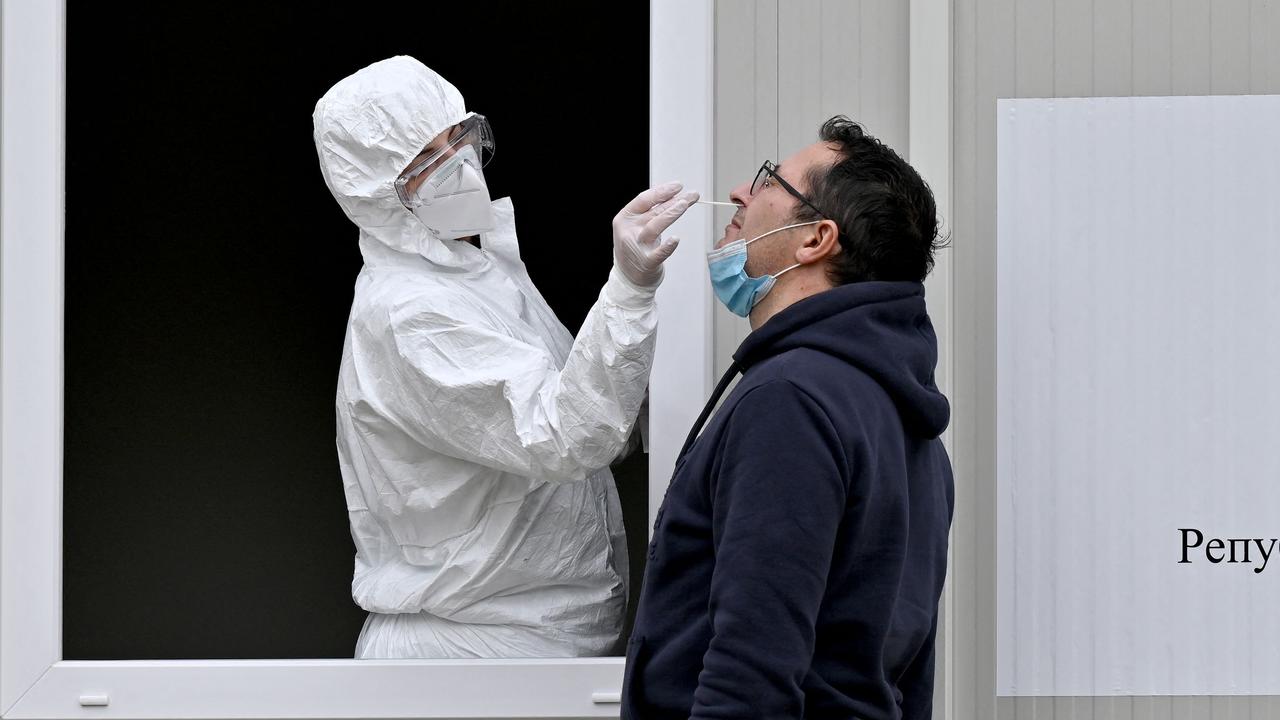Coronavirus: How new changes will affect public transport in Australia and the world
Many students have returned to classrooms today, with some exposed to a vastly different commute on public transport. See how COVID-19 measures differ on trains, trams and busses across the nation and abroad.
Coronavirus
Don't miss out on the headlines from Coronavirus. Followed categories will be added to My News.
More students have returned to classrooms in the latest sign life is edging towards a new normal under the shadow of coronavirus.
Public schools across NSW and Queensland welcomed children back on Monday after about two months of most students learning from home.
Victoria, Tasmania and the ACT are staging staggered returns, while schools in South Australia, Western Australia and the Northern Territory are already open.
NSW Premier Gladys Berejiklian said many students had walked, been dropped off or taken dedicated services to schools, easing the pressure on public transport.
“Can I thank parents for listening to our advice in relation to not only schools being open and safe, but also in relation to how students get to school,” she said.
But for some, catching public transport to school might be unavoidable.
Find out what’s required from you during your commute, and see how each state’s COVID-19 transport rules compare with those abroad:
IN AUSTRALIA
VICTORIA
Victoria’s Department of Transport says public transport operators have increased cleaning measures across train, tram and bus networks.
These forms of transport are now subject to increased sanitation on all touch points, such as stop buttons, door handles and handrails, and these are being disinfected more frequently.
No passenger limits have been introduced, however, commuters have been urged to maintain 1.5 metre physical distancing while on board. It’s also recommended Victorians travel outside of peak times if possible.
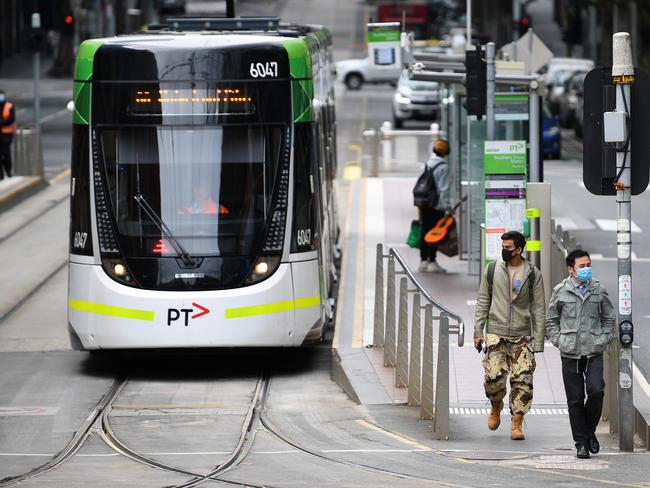

NSW
In NSW, public transport access has now been limited.
Sydney buses can carry 12 people, train carriages can have 32 commuters and a Manly ferry can transport 245 people (down from usual capacity of up to 1,000).
In a bid to help people maintain physical distancing, estimated capacity markers have been introduced on the Trip Planner and Opal Travel apps.
Estimated capacity information will be displayed for all metro and train services, and Opal-enabled buses.
A green icon indicates there is space for physical distancing. The amber indicator warns there is limited space to maintain physical distancing from other passengers, while the red marker indicated physical distancing cannot be observed.
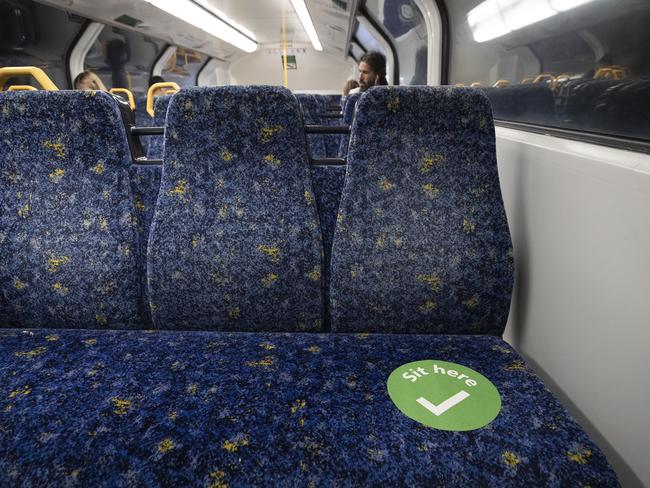
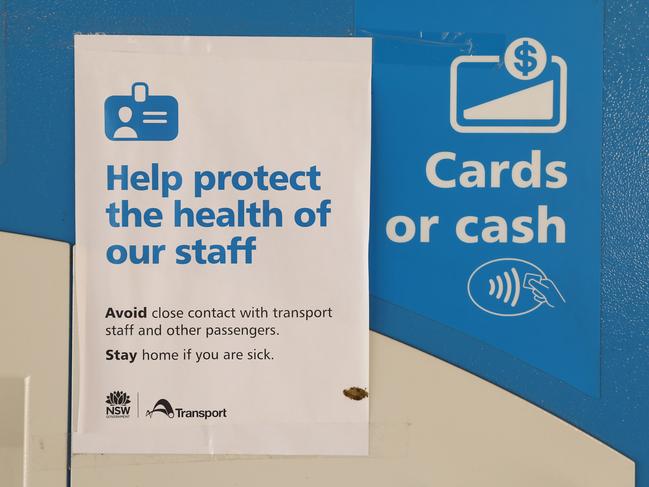
QUEENSLAND
Queensland authorities presently have no plans to limit the number of passengers on trains buses, ferries and trams.
However, the front row of seats on buses have been blocked off, and no cash payments are being accepted at train station ticket windows in order to minimise the risk of COVID-19 transmission.
Cleaning has also ramped up across all forms of public transport to include daily sanitising.
Hard surfaces are also sanitised daily, according to the Department of Transport and Main Roads, including on touch points at busways, train and tram stations.
The Department also urges Queenslanders to maintain physical distancing, and to travel during off-peak times if possible.
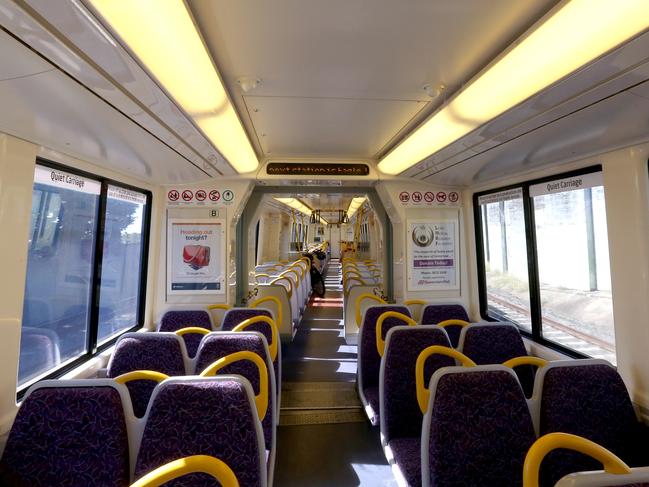
SOUTH AUSTRALIA
No passenger restrictions have been introduced for Adelaide’s bus, train and tram networks.
Adelaide Metro urges commuters to wash their hands frequently with soap or hand sanitiser, to cover coughs and sneezes, and to avoid public transport and direct contact with others if you are feeling unwell.
It says cleaning schedules have been increased across the network, and disinfectant products recommended under national health guidelines are being used.
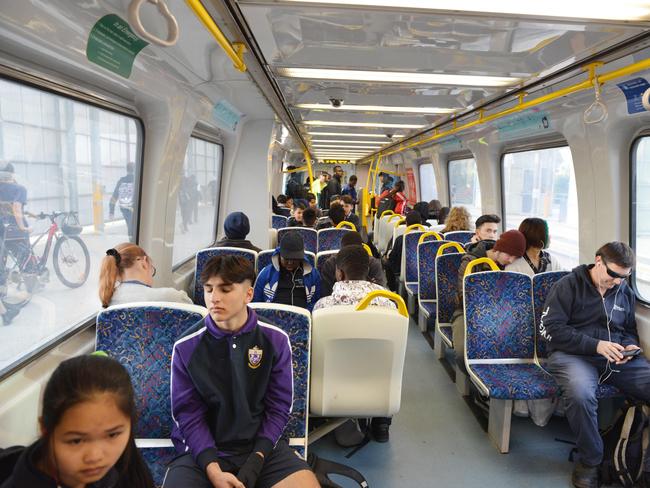
AROUND THE WORLD
NEW YORK
No passenger limits have been introduced on public transport in America’s biggest city during the coronavirus pandemic.
The Metropolitan Transportation Authority (MTA), which runs New York’s train, subway and bus network, says deep cleaning and disinfection is occurring around the clock. Ticket machines, turnstiles and handrails are also being sanitised.
“If it smells like bleach when you get on a bus or when a child goes to school, it is not bad cologne,” New York Gov. Andrew Cuomo said in early March. “It is bleach.”
A ultraviolet light pilot program has also been unveiled, with hopes the lamps could kill COVID-19.
The MTA said it will use “150 dual-headed mobile devices” on buses, trains and at stations from Denver-based start-up PURO Lighting.
PURO Lighting claims UVC light technology has been proven to eliminate COVID-19.
New Yorkers have also been told to only use public transport for essential travel, and to wear a mask if they are commuting.
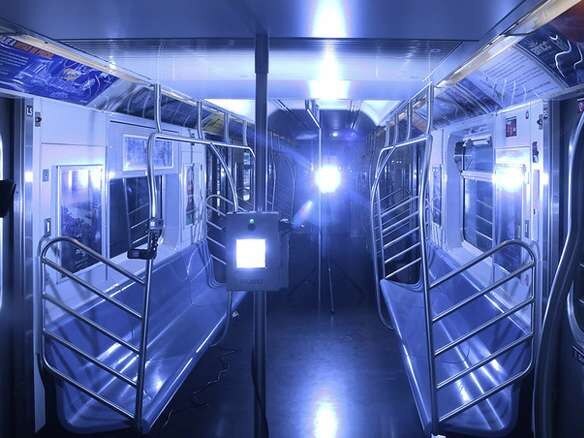
WATCH: New York City is testing out these ultraviolet lights to kill the coronavirus on subways and buses https://t.co/BXnlT0I6v2 pic.twitter.com/dG5fcwGBn6
— CBS News (@CBSNews) May 20, 2020
UK
Services across trains and buses have been reduced since the UK went into lockdown.
No passenger limits on these forms of public transport have been introduced, but the government has told commuters to keep two metres away from others “where possible”. Wearing face coverings while on the move is also recommended.
Transport for London is installing hand sanitisers at all tube, rail and bus stations and cleaning measures have been enhanced.
However, as restrictions are eased and Britons head back to work, the government says they should avoid public transport and walk, cycle or drive instead.
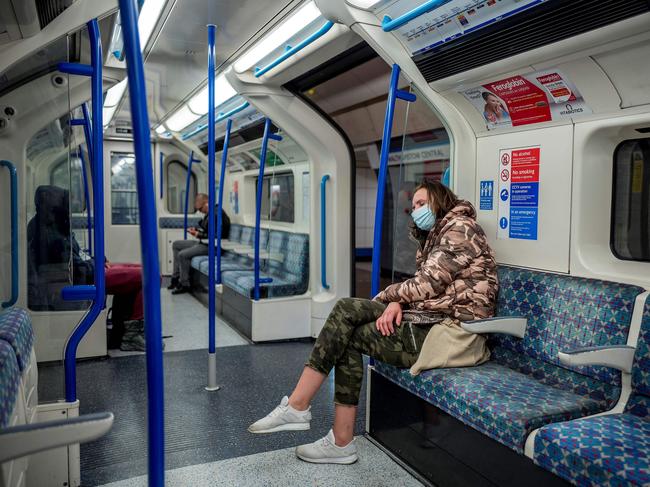
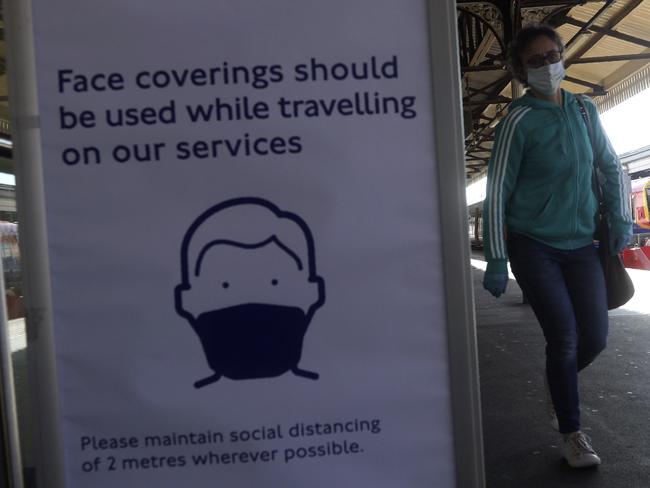
FRANCE
Presently, all commuters in France are required to wear a face mask when using public transport, including trams, trains or the metro system. Passengers who do not comply risk a fine of 135 euros ($A225).
People are being encourage to limit trips to what is strictly necessary, and to use other forms of transportation where possible.
Some metro stations have been closed, and some lines are operating on a reduced service. A number of tram routes are also running to altered timetables.
Hand sanitiser dispensers are being rolled out across all metro stations, and commuters have been encouraged to maintain social distancing.
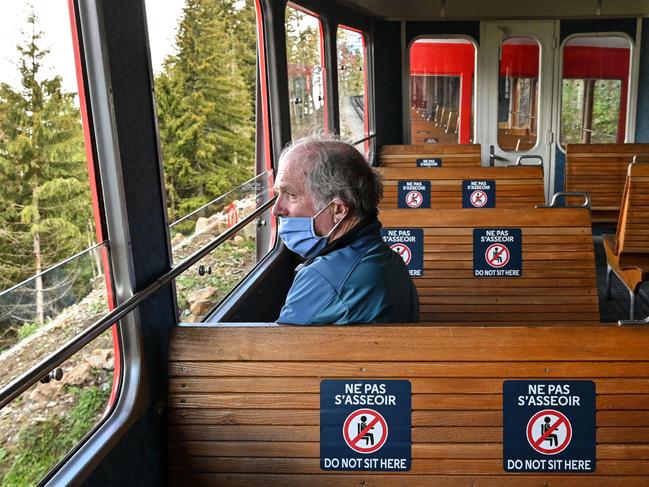
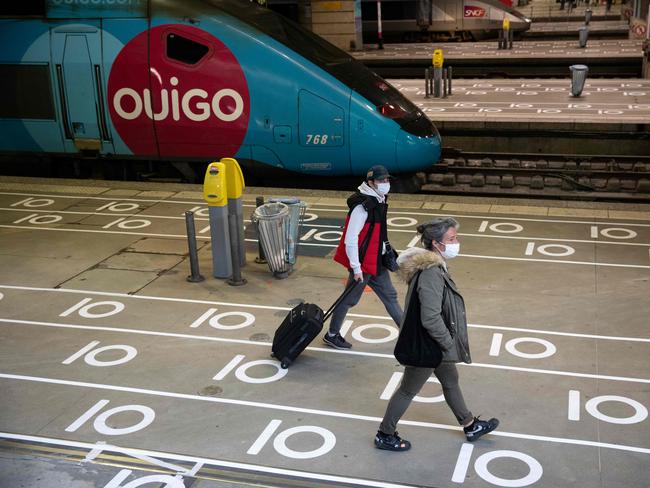
SPAIN
Spain has made face masks compulsory on public transport at the country moves to ease its lockdown restrictions.
In the country’s capital, Madrid, daily disinfection is occurring across all forms of public transport.
Buses capacity has been reduced to 50 per cent of available seats to ensure passengers are appropriately distanced.
If a bus is not equipped with a driver’s protection screen, passengers will have to enter via the rear door.

CHINA
In the Chinese city of Wuhan where the virus emerged last year, six lines of the metro network have reopened.
Passengers are asked to scan their health QR codes which contain personal details when entering stations, and to check their body temperature.
Temperature monitoring systems have been rolled out across 182 metro stations, and signage encourages passengers to leave one seat between them when travelling.
Metro carriages are being disinfected daily.
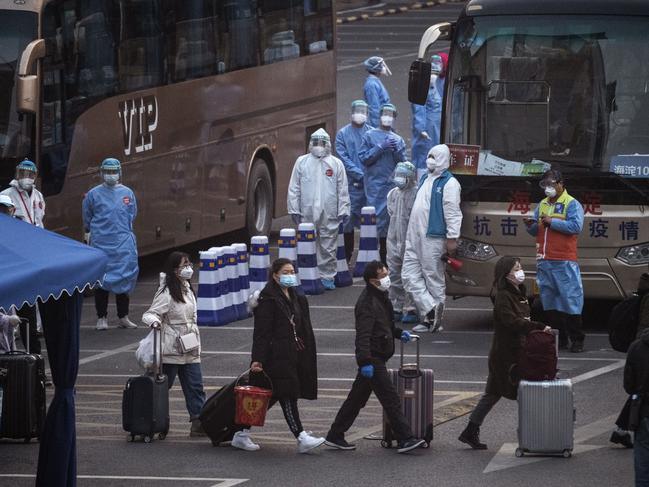
SINGAPORE
Commuters on Singapore’s public transport network are required to wear masks at all times.
Physical distancing stickers have been rolled out across train, buses, as well as train stations and bus interchanges, that show what seats should be avoided and where commuters should stand.
Commuters have also been encouraged only to use public transport when absolutely necessary, and to travel during off-peak periods. They have also been asked not to talk to each other, or on the phone, while in transit in a bid to reduce the spread of airborne droplets.
Thermal scanners have also been deployed at select metro train stations, and those who are running a temperature will not be allowed to enter.
Transport operators have also increased sanitising measures.
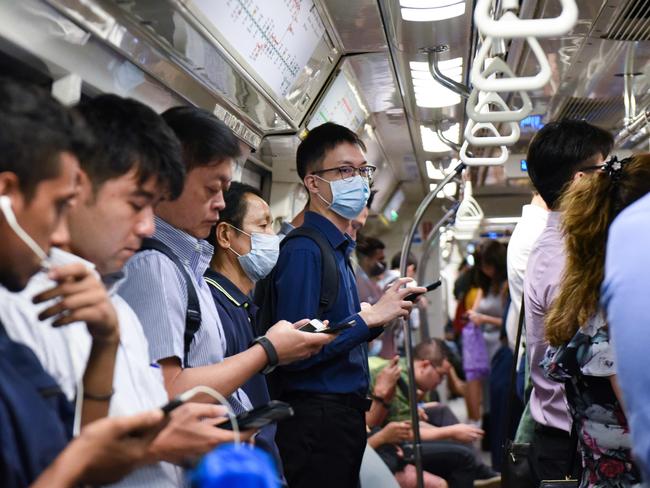
Originally published as Coronavirus: How new changes will affect public transport in Australia and the world

